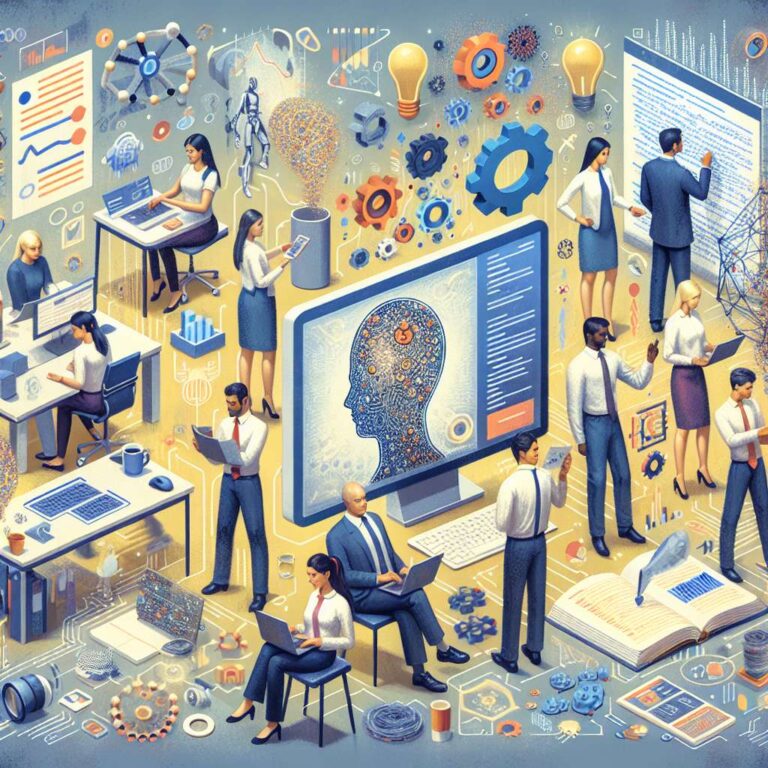Julian Pintat, a freelance English-to-German translator specializing in medical technology and pharmaceutics, has seen his 15-year career transformed as clients shift to machine output and pay for cleanup. He describes fixing basic errors that now make up 95 percent of his work, including an operating manual where “scale” was misread as both a musical concept and a weighing device rather than mineral buildup. The quality issues often make post-editing slower than translating from scratch, he says, halving his income and delaying major life plans. Translators, who felt the impact of tools such as Google Translate and DeepL well before ChatGPT, are an early indicator of how artificial intelligence is redrawing white-collar work.
Across industries, adoption is less about wholesale replacement and more about reshaping roles. London-based law firm A&O Shearman used a bespoke tool to scan 20 years of license agreements for a major U.S. bank, narrowing 2,400 regulatory requirements to 900 and halving project costs even after build time, according to partner David Wakeling. He cautions that off-the-shelf assistants add limited value compared to tailored systems that demand substantial effort. At AIG, CEO Peter Zaffino said the insurer is training a system to act as a “junior underwriter,” handling the bulk of work so experienced practitioners can focus on the rest, with upskilling and retraining part of the cultural shift.
Yet the payoff is uneven. An MIT report in August found 95 percent of artificial intelligence pilots fail to deliver return on investment. A small preliminary study by METR reported 16 experienced developers were 19 percent slower using artificial intelligence coding assistants, despite believing they were faster. The gap between market expectations and real-world performance is squeezing businesses and workers alike. Even so, capability is improving: a preliminary Mercor study reported near-doubling of performance on tests across banking, law, and consulting in a little over a year, while an OpenAI report found top models compare favorably to human work nearly half the time. Both note these gains reflect well-scoped tasks, not the ambiguity of everyday workflows.
Implementation remains the swing factor. Morgan Stanley built meeting transcription and summarization tools that save hours, and an internal search product to surface information. Early assumptions that dumping all knowledge into a system would yield accurate answers gave way to a focus on well-structured data and rigorous testing, says Kaitlin Elliott, who leads the bank’s generative initiatives. That shift is creating demand for technical skills, with younger employees often bringing artificial intelligence fluency into organizations. Vendors are stepping in too: Scale AI advises clients to start from business problems rather than technology, noting cases where multiple chatbots created more friction and that many solutions lean on traditional machine learning or software engineering, not just generative models.
Tools are proliferating. DeepL has added custom glossaries and follow-up questioning to address ambiguities, with CEO Jaroslaw Kutylowski saying translators who lean into artificial intelligence work faster, though the company compares itself to rival systems rather than unaided professionals. Lower costs per word may be offset by higher volumes, but some organizations are already bringing translation in-house. Law firms increasingly deploy ready-made and custom systems, from Harvey for general queries to in-house tools like ContractMatrix for niche work, while enterprise platforms now pull from documents, Slack messages, and email to answer questions. Cohere’s North automates internal support and prep work, handling about 90 percent of general support tickets with humans in the loop, and has been adopted by RBC.
As for the long-term trajectory, Cohere co-founder Nick Frosst is skeptical that so-called artificial general intelligence will arrive via current approaches, but he still expects major labor disruption comparable to the industrial revolution. He argues the transition will require responses beyond any single company, pointing to the historical roles of governments and unions in cushioning workforce shocks.

